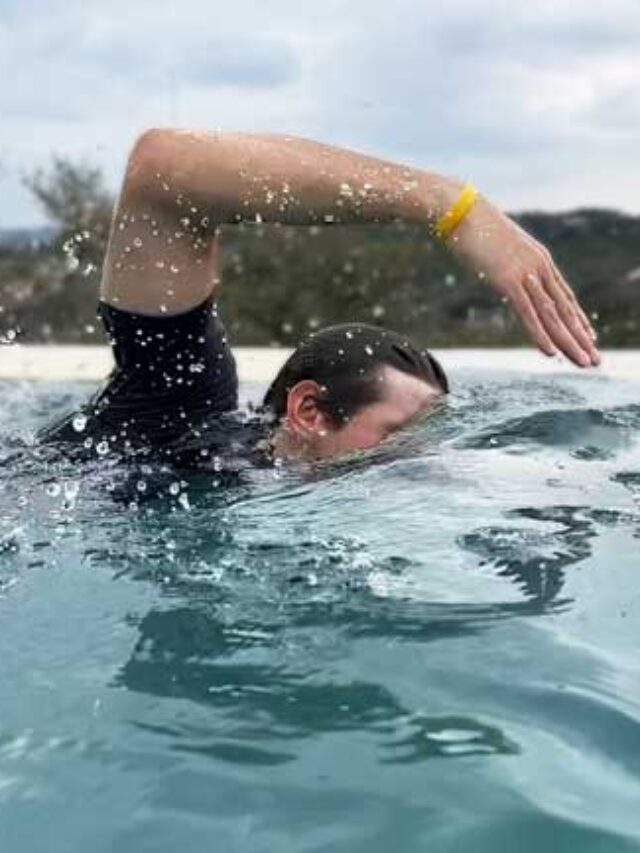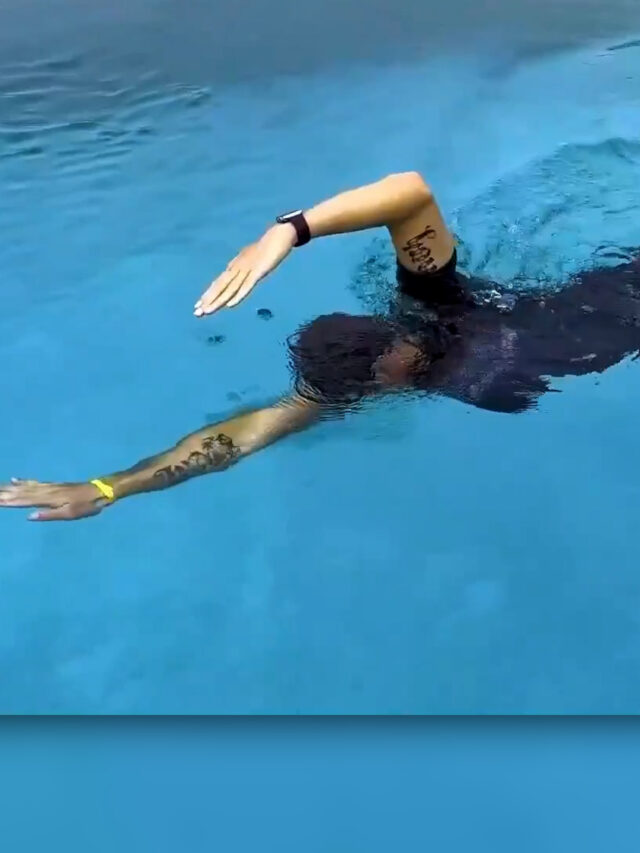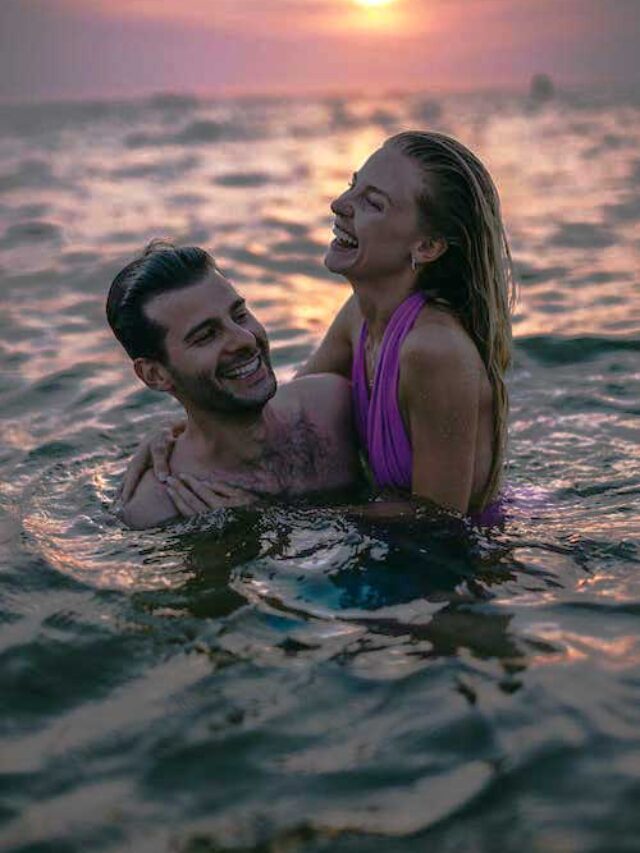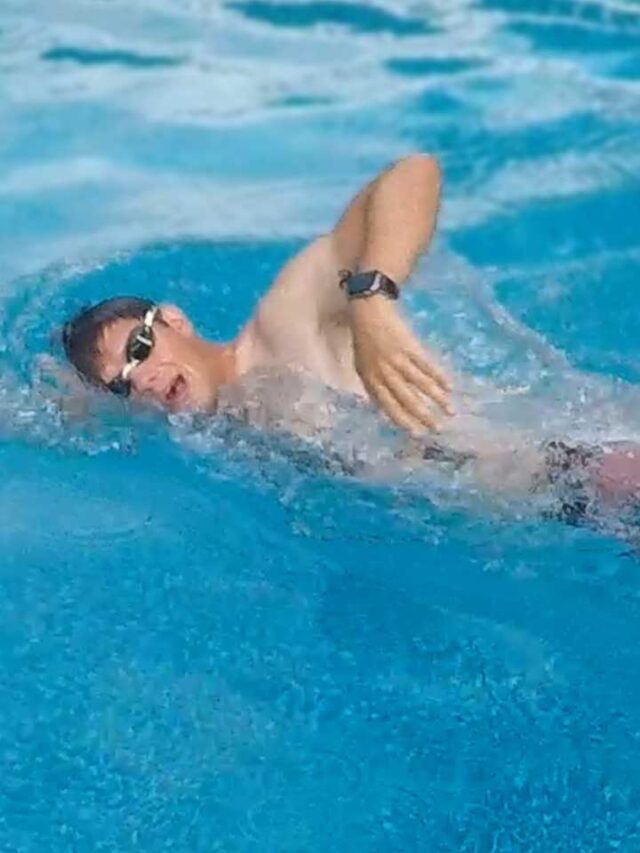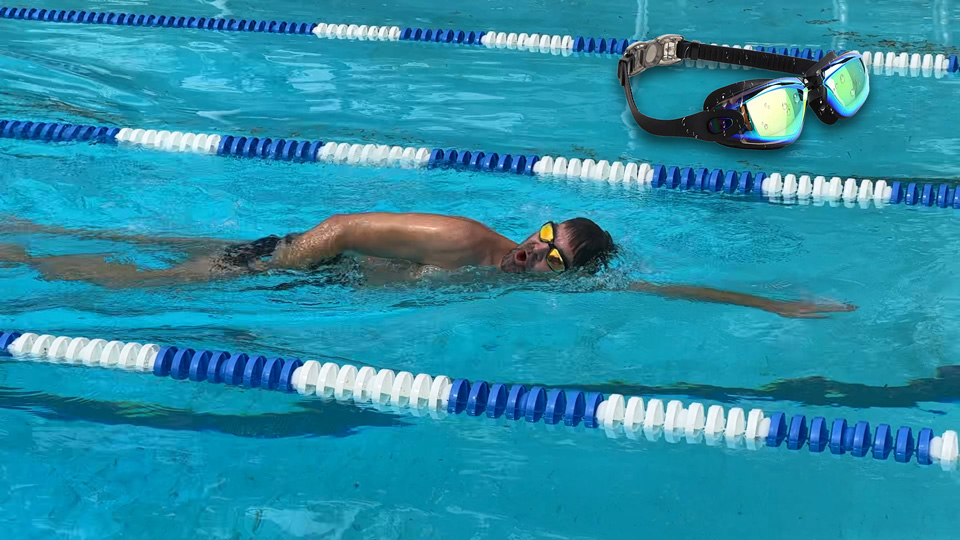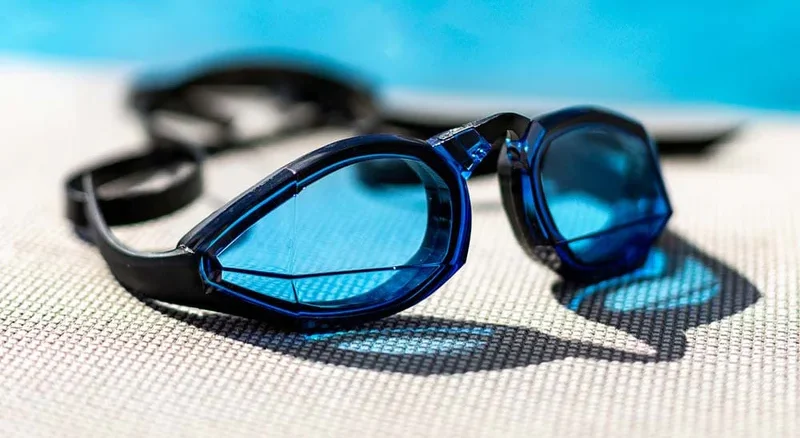In this article, you will learn the most popular types of swimming strokes. Swimming strokes are how a swimmer propels their body through the water. The strokes consist of various arm and leg motions to move the body forward. When done correctly, swimming strokes are smooth, graceful, and designed to minimize water resistance. With the proper stroke, a good swimmer should be able to move through the water with a very little splashing. The more popular styles of swimming strokes include:
Types of Swimming Strokes
- Freestyle
- Breaststroke
- Backstroke
- Butterfly Stroke
Now you will learn about each stroke in detail.
What is a Freestyle swimming stroke?

This is the most popular one among the various types of swimming strokes. Freestyle is the term for a competition using unregulated swimming techniques. While any swim style can be used in a freestyle competition, the most commonly used method is the “front crawl”, as it is the fastest of the major swim techniques. This use of the front crawl has to lead to the term freestyle becoming synonymous with front crawl races in many areas.
The front crawl is performed similarly to the backstroke, except that is performed on the chest instead of the back. The starting position is straight in the water with the heads extended above the head and legs pointed straight down. Like the backstroke, the arms are moved in an alternating pattern.
From the start position, one arm is turned so that the hand is down at an angle to cup the water. That arm is then moved in a semi-circle downward until it is parallel with the torso. As soon as the arm reaches the fully downward position, it is raised above the water and arced back to the starting position and the same motion is repeated with the other arm. While the arms propel the body forward with the alternating motion, the legs are moved in the “flutter kick” with the feet alternating up and down to push forward in the water.
In competition, freestyle races are is performed in 50, 100, 200, 400, 800, and 1500-meter increments as well as medley competitions. While individual freestyle races allow swimmers to use any technique, in medley competitions, freestyle refers to any style other than backstroke, breaststroke, and butterfly.
What is Breaststroke swimming stroke?

The breaststroke is usually one of the first swimming techniques that a beginning swimmer learns. It is a very popular style for recreational swimming because it allows the swimmer to keep his/her head out of the water for much of the time and doesn’t require as much side-to-side motion in the water. Alternately, in competitive swimming, the breaststroke is considered one of the most demanding swimming styles, as it requires extreme stamina and strength compared to other strokes.
The breaststroke is performed from a starting position with the arms above the head and the legs straight back. The first motion is to sweep the arms in an arc to the side until they are parallel to the shoulders before pulling them quickly back into your chest and returning to the start position. As the arms sweep and pull back to the start position, the torso will raise out of the water allowing time to catch a breath between strokes.
The second motion involves the legs in a motion that is commonly referred to as a “frog kick” as it mimics the movement of a frog in water. From the starting straight position, the feet are pulled up towards the body with the knees together. Then the feet are extended to the sides and then, with a sweeping motion, pulled back to the starting position. Because the torso is at an angle to the water during the upper body motion, the breaststroke is one of the slower swimming techniques. However, because of the angle, it requires great leg strength to perform well.
In competition, the breaststroke is the slowest of the four major swim techniques (the others being backstroke, butterfly, and freestyle) with the fastest swimmers only being able to swim about 1.57 meters/per second. In most competitions, the breaststroke is performed in 25, 50, 100, and 200-meter races as well as in many individual medley competitions.
What is a Backstroke swimming stroke?

The backstroke is performed from a starting position on the back with the arms extended above the head and the leg pointed straight downward. In the backstroke, the arm movements provide the majority of forward momentum. The arm motions consist of alternating the arms in arcing motions below the water. While one arm is under the water, the other arm returns to the starting position above water. This allows for one arm to be in the water at all times while ensuring that the return motion doesn’t slow the swimmer down.
In competition, the backstroke is between the breaststroke and butterfly in speed with a max speed of about 1.84 meters/second. It is raced in 50, 100, and 200-meter events as well as individual medley competitions.
What is a Butterfly swimming stroke?

Of the four swimming techniques used in competition (the others being breaststroke, backstroke, and freestyle), the butterfly is the most recently invented, dating back to 1933. It is the fastest of the four competitive swim styles but also one of the hardest as it requires near-perfect technique and extremely strong shoulder strength for it to be workable. The butterfly’s unforgiving nature when it comes to technique leads to many coaches listing it as the most difficult of the four main swim styles.
The butterfly is performed from a starting position on the chest with the arms extended above the head and the legs straight back. The propulsion of the butterfly is created by synchronous motion in both the arms and the legs. From the starting position, the arms are moved similarly to the breaststroke. With the palm outward, the arms are arced back until they create a Y-shape with the torso.
From this position, the arms are quickly pulled down towards the torso, keeping the palms facing down to catch water and push the body forward. Once the arms are down by the swimmer’s side, immediately pull them slightly above the surface of the water and return them to the starting position. While the arms repeat the above motion, the legs are moved in what is referred to as a “dolphin kick”. To perform the dolphin kick, the legs and feet are kept together and moved in an up-down motion as though they were the tail of a dolphin, hence the name of the kick.
The butterfly is one of the fastest swimming method used in competition. With proper technique, a swimmer can swim the butterfly up to 2.18 meters/second. In competition, the butterfly is performed in 50, 100, and 200-meter races.
Happy swimming 🙂
If you’re looking for more tips on how to improve your swimming, check out our other blog post on the subject listed below. Thanks for reading! 🙂 Don’t forget to subscribe our RocketSwimming YouTube channel so you never miss a new video or training tip! We publish new content every week!
Check out our other posts


